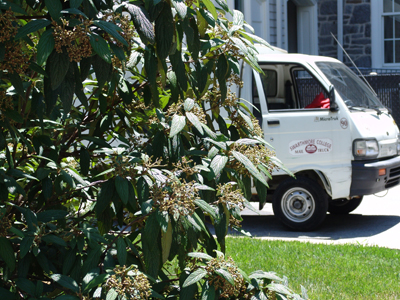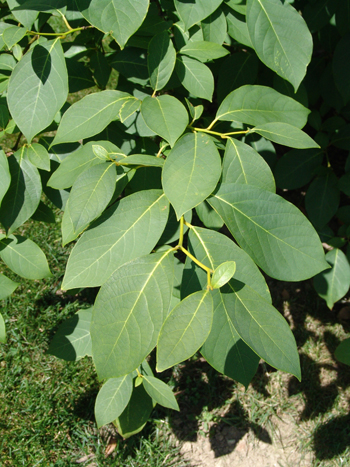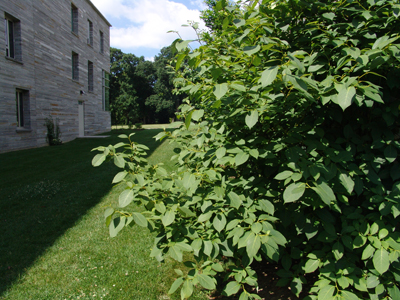Lindera reflexa

Part of our planting efforts at the Scott Arboretum are designed to disguise or hide the utilities of campus buildings. We have used Cryptomeria japonica ‘Yoshino’ to hide the loading dock of Clothier Hall, Viburnum rhytidophyllum ‘Cree’ to camouflage the loading dock of Parrish Hall, and our boxwood trials to disguise the utilities of Beardsley Hall. Our spicebush collection throughout campus also veils various mechanical installations. Planted to serve as a screen for utilities behind Mertz Hall, Lindera reflexa reaches out along this border of the Gold Medal Garden. This Asiatic spicebush is a rare species with broad deciduous leaves.

The broad deciduous leaves of Lindera reflexa. photo credit: R. Robert
Like most Lindera, it is prized for its truly stunning fall color, turning from yellow to vibrant pumpkin-orange. Thriving in sun and shade, L. reflexa has the best fall color when plant in full sun. This spicebush grows best in a organic-rich soil. Because this is relatively new to cultivation the ultimate size is not well documented; however, it probably will reach approximately ten feet tall and ten feet wide at maturity.

Lindera reflexa provides screening between Kemp and Mertz Hall. photo credit: R. Robert
Consider the various species of Lindera for screening unsightly views in your garden. Almost all Lindera are also deer resistant! Enter for your chance to win the rare Lindera reflexa at tonight’s Sunset Sippin’: Blanc Franc and Fragrance from 6 to 8 pm.





No Comments